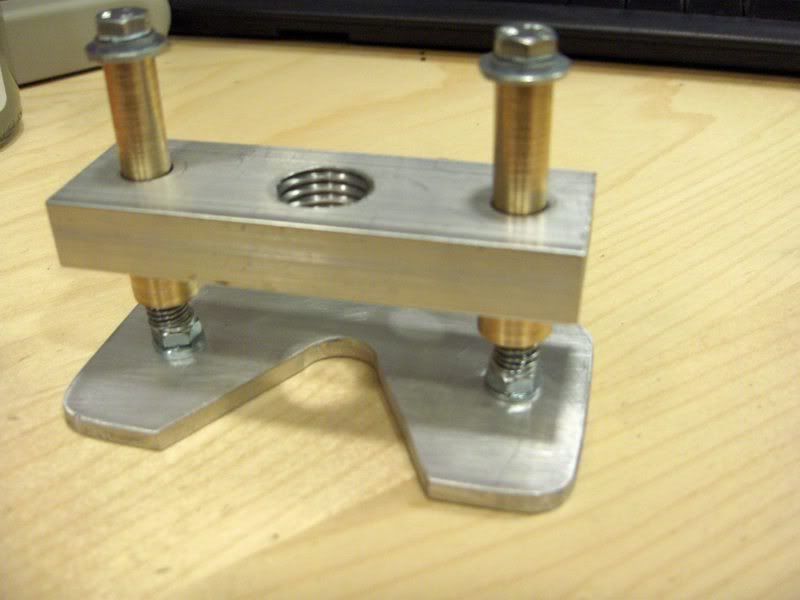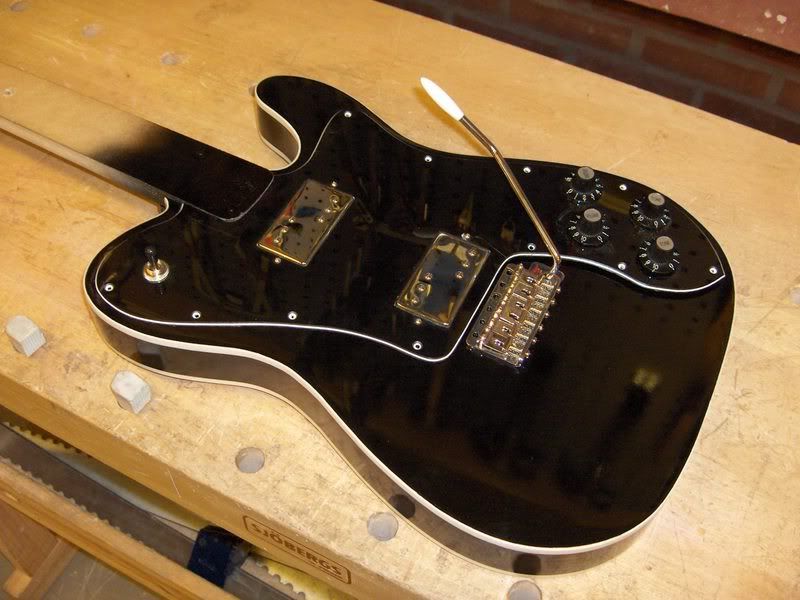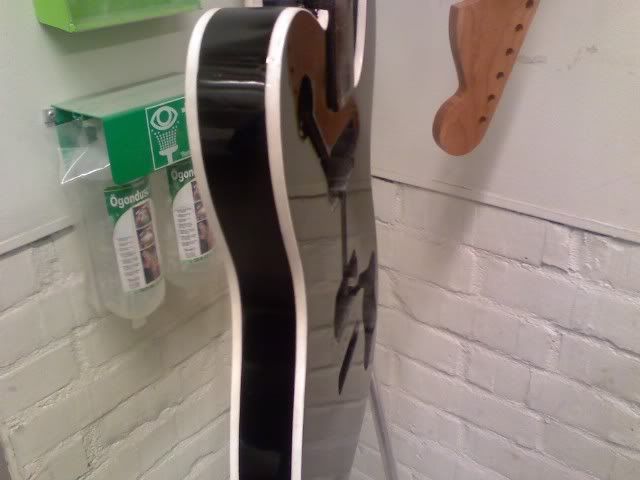-
Posts
584 -
Joined
-
Last visited
-
Days Won
3
Content Type
Profiles
News and Information
Tutorials
Product Reviews
Supplier Listings
Articles
Guitar Of The Month
Links and Resources
Forums
Gallery
Downloads
Posts posted by aidlook
-
-
as far as I can tell he is actually using a HSS...
-
...Now looking at someone like David Gilmour...
I was thinking of Gilmour and his 3 1/2 step bends when I saw that fretboard. They claim that those crazy frets won't affect bends, but how could they not? If you bend past the 'transition point' of the frets between strings, you'd have to hear a noticable bump, or maybe choke the note entirely depending on the difference between the fret positions.
I'played one (not one of the extreme ones) and actually it didn't really affect bends. I thought it was going to, but it didn't. And also I wouldn't believe Vai would want them if he couldn't do bends...
-
thanks, Gonna try it out today in the workshop, bought a jewellers saw and some fine router bits yesterday
-
Cool....although someone should probably tell him slash beat him to the acoustic/electric ..
-
Here it is! my first real experience working with metal. Just needs a couple of springs on the top.

Adjustable height router attachement for dremel made of brass and aluminium.
-
What are you using for the nut? Looks a lot higher than a standard nut to me.
Also I think you should use 6 strings while testing. You could probably still pluck just one string by lowering the other 5, and raising the on you're plucking.
-
UPDATE:
I've decided against filling the holes and will be making a really small cavity with a coverplate where the bushings may dwell unseen. Doing this feels right to me and is IMO more aesthetically pleasing.
IMO it's making excuses for not (easily) repairing a mistake. But then again...that's just my opinion
-

with pickguard...I'm really starting to like this thing

-
I got some ideas...But I'm at school right now. I can make some illustrations of my idea later.
-
I used the small 3-4 mm holes as a guide for my ferrule-holes so they don't align either.

It's f-ugly.
Therefore, I will make a coverplate that keeps them out of my sight whenever I'm not changing strings. Luckily all other holes that are to be drilled are much bigger so the bits shouldn't wander on those.
Thanks for the input guys!

I'd say fill the hole and re-drill it instead...It's gonna come out better in the end, and will probably take less time.
And I don't think that the end product will be that important for your grade btw, it's 90% just the log and presentation.
You can end up with a pile of wood and still get good grades becaue the project is not at all about what you make, it's just about the process.
-
No words to say how much i like your guitars!!!
The inlay inside the Shark is....perfect!!!!
+1
Can't you write a tutorial on how to make awesome affordable inlays with newspaper

-
very,very nice!
great job!
thanks...always nice to hear

-
I think he means Nov. 2, 2007. In many parts of the world, they put the date before the month when notating it as such.
Because just as with the metric system....there's actually some logic to it

-
Ok... the guitar took like 2 weeks to build, but has been waiting for a finish all summer.
Here's after a few clear coats.

-
Nice to see someone inspired

guitarfetish sells 4+2 tuners, not too expensive, and you could save the 6 you have for another project.
You can use your old tuners though, although it's usually not reccomended to run tuners in reverse. If this will really cause a problem in the long run I cannot tell you. On my first guitar I put them in reverse, haven't encountered any problems so far.
-
Why not just route the cavities for the pickups you want?
-
I love my T-rex Mudhoney through the AC30.
And of course my TS replica that I built myself...My parents live in australia, so I got my mother to order a kit from Perry for my birthday and send to Sweden

-
This link might answer part of your question.
to me, that link really says nothing...
Nowhere is the actual "tone" discussed" just how a couple of different guitars seem to resonate (with the strings dampened).
Also, I'm not really shure what that test is supposed to prove...that an acoustic resonates differently from an electric? that two electrics of different materials resonate differently?
The test is carried out on one guitar of each model, this is imo way to little to draw any conclusions, especially about the shape of the instrument, since they where built from different materials.
-
Of course the shape matters, everything matters. But does it make a noticable difference? chance is pretty slim, considering two bodies of the same wood and mass, unless the shape of one of them is really out there (like a 1,5m long stick) the difference would hardly be noticable.
Biggest trap when planning a guitar is reading into too much bullshit on the internet. Just because someone figure out how to post their thoughts on the web, doesn't give them credibility unless they can back their theories up. In most cases, someone just comes up with something that seems logical to them, posts it on the web, 100 people who don't know better regurgitate the "information" somewhere else and after a while it's suddenly a fact.
I'd say worry about the stuff that will have a major influense on sound, don't bother about the rest of the voodoo. IMO it's impossible to predict exactly how a guitar is gonna sound anyway, so just build a guitar with components that are proven to work and get some experience...after a while you can start experimenting with way-out-there theories.. (even if you hear someone who claims they've experimented and come up with amazing results, the truth is that the amount of data collected is most likely waay less than what's needed to actually prove a theory)
-
Of the pictures shown, my conclusion is that they are separate whammy bars for each string. Also, I assume every string is connected to a single spring, so that the overall tuning won't be affected if a string breaks.
-
Here's one I like from Kritz Guitars. It's small with a straight string pull.
Ah I love this site! All those trademark names...(seriously, though, I love luthiers who like to push the envelope)
... I haven't heard that amount of pseudo-scientific claims since my last argument with a creationist...
-
Hammer wouldn't be the best option imo...
What you linked to is called a vice.
Best bet if using a vice would be to get a much larger piece than you need to make it easier to bend and then cut off the excess
-
If you're replacing them, make shure to get the solid shaft pots.
-
most people build pointy guitars??



Please Help Me With This Bridge
in Tools and Shop Chat
Posted
try moving without strings on